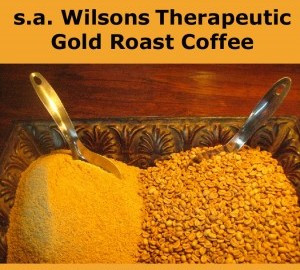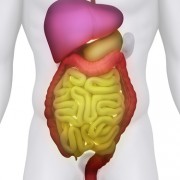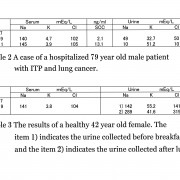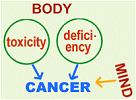Biological Basis for Coffee Enemas
A lecture by Gar Hildenbrand, Excerpted from “How the Gerson Therapy Heals,” 1990.
The coffee enema is capable of removing circulating toxins and partial metabolites for one specific reason, and that is that the coffee enema not only dilates bile ducts – which Gerson knew – we now know, from the work of Wattenberg, Sparnins, and Lam at the University of Minnesota, Department of Pathology, Minneapolis, that coffee stimulates an enzyme system in the liver, glutathione-S-transferase, that is capable of removing a vast variety of electrophiles from the bloodstream. Electrophiles are referred to in popular literature as free radicals.
Electrophiles are atomic particles with one or more electrons in unpaired spins. They have an affinity for electrons and they want to get involved where they should not get involved. They are charged particles, and they will damage membranes of cells and they will inflict disturbances in cellular metabolism.
Under the influence of a coffee enema the glutathione-S-transferase enzyme system – part of the ligandine enzyme system that accounts for about 3% of all enzymes in the liver, responsible for removing electrophiles from the blood stream – will be increased in activity from 600%-700% above normal. No materials other than coffee are known to stimulate it as much. That’s why people are known to get a buzz off of a cup of coffee in the morning, and why some people are too grouchy to do anything but read the newspaper until they’ve had their coffee, and why coffee is so effective in clearing heads.
The coffee enema stimulates the glutathione-S-transferase system by 700%. During the time that the coffee enema is being held in the gut, all the blood in the body passes through the liver at least five times. Every three minutes, all the blood in your body passes through your liver. In addition to stimulating the enzyme system, the theobromine, theophylline, and the caffeine in coffee all have physiological effects. Among these are the dilation of blood vessels and bile ducts, the relaxation of smooth muscles, and the increase of bile flow. The palmitates, compounds in the coffee that actually stimulate glutathione-S-transferase, also cause increased bile flow.
In addition to that, the quart of water in your gut stimluates what is called the visceral nervous system. The viscera are the guts. The visceral nervous system is the nervous system that orchestrates what is called peristalsis, the weak force that moves materials through the intestines. The visceral nervous system is stimulated by a quart of water in the gut. Additionally, at least part of that quart of water passes through the wall of the gut and dilutes the hemorrhoidal and then the portal blood which goes into the liver, socks the liver, actually dilutes the bile and causes more readily increased bile flow. Also, the net effect of the coffee enema is to cause a flushing of toxic bile, or bile that has been loaded with toxins by the glutathione-S-transferase system, out of the intestines.
Glutathione-S-transferase shuttles; it’s an enzyme catalyst. It’s out there catching free radicals, like an outfielder on a baseball team, and throwing them to the glutathione molecule of the bile. The glutathione molecule has a branch called the sulfhydryl part that absorbs many electrophiles. It makes them inert in the same way that a clay slough can make atomic waste inert because it has great adsorptive capabilities. What then happens is that these things become bile solutes. The bile solutets in the bile are flushed out of the gallbladder and the liver, and into the duodenum, and peristalsis carries them through the small intestine, through the colon and out the rectum. That is effective dialysis. The coffee enema is the only pharmaceutically effective choleretic in the medical literature that is repeatable many times daily; choleretic, like diuretic. Diuretics cause urination. Choloretics cause bile flow.
The coffee enema is safe and effective when used as a part of this program as our physicians direct. Dr. Peter Lechner at the Landeskrankenhaus of Graz, Austria, has been working for six years now, studying a very modified Gerson Therapy. He has been using the coffee enemas as part of the post-surgical programs of the second surgery department of Landeskrankenhaus. He did some rat experiments in which palmitates were extracted from coffee, the cafestol palmitates, and in which they were seen to increase bile flow in the rats. Lechner became convinced, and wrote in a journal called Aktuelle Ernåhrungsmedizin (Contemporary Nutritional Medicine), 2 Band 15, April 1990, that these palmitic acid salts could be very powerful liver protective drugs if they would be developed by a pharmaceutical corporation.
Until that time, as he said, “We have to continue to administer them in the awkward form of enemas… because patients cannot be expected to consume the therapeutically necessary daily amount of at least one liter of coffee by drinking it, without risking side effects in the upper alimentary tract.” Nothing else works.
In the Second Surgery Department of the Landeskrankenhaus in Graz, Lechner has a bunch of very normal colleagues who are, none of them enthusiastic about alternative therapies. But neither are they willing to argue with scientific fact. This is a six-year-long program. Its findings have been published twice.
So now you have coffee enemas cleansing the blood. What is the coffee enema removing? Ammonia-like products, toxic-bound nitrogen, protein derivatives that are often times charged particles, polyamines, amino acid clumps and complexes.
When I first talked to Regelson, in 1981, he asked me if the coffee enemas had been studied in the filed of Ammoniapathophysiology. I said I didn’t know what he was talking about. He said, “The name Visik, the father of Ammoniapathophysiology. You probably haven’t been taught about it because it is veterinary medicine.” I said, “Oh, enlighten me please.” He said that it was very simple.
Visik proposed and proved that if you antibios feedlot animals, you’ll cut down on the amount of urea-splitting bacteria in their guts, lower their tissue and serum ammonia levels, and they will gain more carcass weight. You can get bigger, stronger, more muscle-loaded feedlot animals for more beef if you give them antibiotics. That is why we give antibiotics to beef.
We could give coffee enemas to animals and have the same effects. That’s why Regelson wanted to know if we had studied this in the field of Ammoniapathhophysiology; that’s where the coffee enemas belong. We are actually altering the level of tissue ammonias; and if it can help cattle to gain carcass weight in a feedlot, eating those ridiculous high-grain diets that cause the bacterial problems in the first place. Cattle are not designed to eat a lot of grain – if that can happen, certainly, coffee enemas, having similar effect in people who are not being subjected to high-grain diets, can improve tissue resistance. And they do.
When you improve the sodium ring around tumors and diseased tissue, the first thing that happens is that tissue gets better drainage and better circulation. And the cells begin to function normally. And when cells begin to function normally, they do what’s normal for cells, they behave like themselves. And that means our tissues are now themselves again. They bring, with normal function, requisite behavior for health, which is resistance to disease, and immunity against extant disease. That’s were tissue immunity comes from, and that’s where tumor immunities come from: the health of normal tissue.









